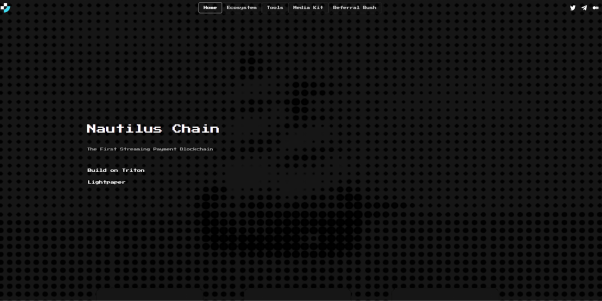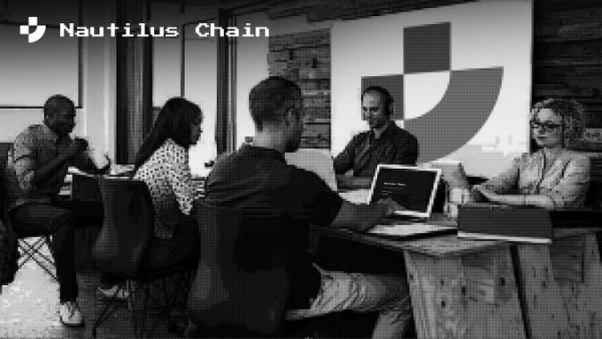At present, Nautilus Chain is preparing for the final stage before the mainnet launch. It is reported that the chain has updated a new test network, which has carried out a new technical upgrade on the basis of the previous version of the test network. The latest test network version and ecological development Technical planning is closer. This testnet upgrade will be the last iteration of the testnet version, and will go live on the mainnet after the test.
The following is the updated testnet information:
Chain name:Proteus Testnet
Chain id:88002
RPC:https://api.proteus.nautchain.xyz/solan
Faucet:https://faucet.proteus.nautchain.xyz/request_neon
Users participating in the test can use the above test information to set up on the wallet for a new round of test interaction.
Nautilus Chain is currently the industry's first modular Layer3 chain, which allows developers to develop customized applications. Nautilus Chain itself does not use Layer 1 such as Ethereum as the root layer. It uses Layer 0 facility Celestia as the main source of Nautilus Chain modularization. Through Nautilus Chain developers can directly build a highly customized application layer (not limited to Rollup) , while Celestia provides DA.

In addition to DA, Nautilus Chain uses Eclipse as the settlement layer. Based on Eclipse, Nautilus Chain will no longer rely on Layer 1 such as Ethereum in the settlement of the system. Based on these components, Nautilus Chain developers can build various "independent" DAPP-Chains or DAPP-Rollups or DAPP-Subnets that can run in parallel from the bottom up, allowing developers to stack different chains into layers , thus creating a chain stack, and no longer need to end up on Layer1. In this process, Nautilus Chain acts as a parallel processing layer at the top, which helps to achieve scalability at the execution layer in the EVM environment.
Nautilus Chain is realizing the modular stack of Celestia + Eclipse + zkEVM. With its modular architecture, it has also become the industry's first parallelized and fastest-running EVM Rollup Layer3 expansion solution, which can store, Computation, consensus, etc. are encapsulated in different modules, which have higher scalability and expansion capabilities, further improving network throughput and security, and increasing privacy through ZK Rollup technology to further expand richer functions.
Nautilus Chain: Building the fastest zkEVM
Nautilus Chain is also one of the advocates of zkEVM. As the first Layer3 chain with modular architecture in the industry, it uses Zk-Rollup as one of the main customization solutions. Developers can customize Zk-Rollup based on this solution. Layer, and has many features such as extremely high interoperability and parallel operation, and does not depend on Ethereum Layer 1 (mentioned above).
ZK-Rollups is a scalable solution based on zero-knowledge proof technology. The early zero-knowledge proof technology was not directly developed for EVM, so it cannot be directly applied to the Ethereum Virtual Machine (EVM) for a long time At the same time, the early Ethereum did not consider ZK at the beginning of its design. ZK not only involves cryptography, mathematics but also hardware knowledge, etc., so they are not compatible with the execution environment and instruction set of EVM.
Over time, some new zero-knowledge proof technologies and tools have emerged, such as ZKP (Zero-Knowledge Proof) and SNARK (Succinct Non-Interactive Argument of Knowledge), etc. These technologies can be better compatible with EVM, and With the popularity and application of EVM, EVM has become almost synonymous with the Ethereum ecosystem, representing the developers, applications and tools of the Ethereum ecosystem, so zkEVM came into being. Vitalik Buterin, the founder of Ethereum, also has high hopes for zkEVM, and expressed his expectation to let zkEVM enter L1 and build an open multi-zkEVM.
Vitalik Buterin once stated in an article that "zkEVM is used for rollup today. This increases scalability by allowing expensive EVM execution to happen only a few times off-chain, while others only need to verify SNARKs issued on-chain to prove EVM execution Computed correctly. It also allows some data (signatures in particular) to be off-chain, saving gas costs. This gives us a lot of scalability benefits, scalable computation combined with zkEVM and scalable data with data availability sampling Allows us to expand even further." Zk-Rollup is the best way to build features such as privacy and compliance at the bottom of the chain, and for ZK-Rollup, zkEVM is the best way to be compatible with EVM.

Although Starkware, zkSync 2.0, Polygon, Scroll, etc. are also early advocates of zkEVM, relatively speaking, Nautilus Chain has a unique architecture. It is the first modular chain, and storage, computing, and consensus are all in different modules. It means that it can achieve higher scalability and expansion capabilities, and Nautilus Chain is expected to become the first parallelized and fastest EVM Rollup in history. Its advantages are more obvious and more attractive to developers.
This replacement of the new test network will be the last version upgrade of the test network. After the end of this round of test network, the Nautilus Chain main network will be officially launched, and the industry may enter a new Layer3 era.